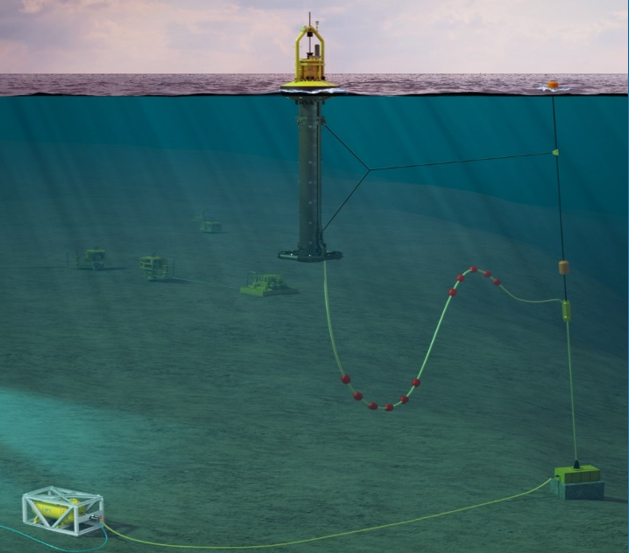
Ocean energy technology developer Ocean Power Technologies (OPT) has received a DeepStar project award to study the use of its PB3 PowerBuoy to provide remotely controllable zero-carbon power for deepwater subsea oil production applications.
OPT's moored floating buoys - such as OPT PB3 PowerBuoy - harvests wave energy and converts it to electricity.
The conversion of wave energy into electric power is carried out through a direct drive generator that continuously charges an on-board battery pack (Energy Storage System). Power from the battery is delivered to meet application and end-user needs, such as powering equipment located on the seabed.
"Remote Zero Carbon Power for Electric Subsea Operations" is a techno-economic feasibility study funded by the DeepStar CORE program and supported by Total E&P Research and Technology USA.
The project will explore using OPT's PB3 PowerBuoy and a subsea battery to reduce the cost and carbon emissions associated with conventional means of powering and controlling subsea oil and gas production equipment. The study will consider water depths of 1000, 2000, and 3000 meters.
The wave-energy buoy, i.e. power source, can be placed closer to the production site reducing the cost of a subsea umbilical. Coupled with a modular subsea battery (energy storage in the 100-500 kWh range) it provides sufficient power to operate electric trees, SCMs, and HPUs. This enables decarbonization and autonomous, remotely controlled, all-electric subsea production. Credit: Deepstar
Credit: Deepstar
"We are excited to work with Total and the DeepStar member companies to explore the practical cost-saving, low-risk, and zero-carbon benefits of our solutions for deepwater subsea oil production applications," said George H. Kirby, President and Chief Executive Officer of OPT.
"Total is interested in studying how locally generated electrical power can support its vision of all-electric, low-carbon developments in deep offshore," said Daniel Byrd, Subsea & Deepwater Manager at Total E&P Research and Technology USA. "This study is intended to identify which combinations of parameters (water depth, tieback distance) could bring cost savings for a simple subsea architecture using OPT's PB3 PowerBuoy."
According to available information, the budget under the project starting this month is $80,000. The project is expected to complete in March 2021.
DeepStar is a joint industry technology development program focused on advancing technologies to meet its members' needs. Along with Total, members of the Texas-based consortium include Chevron, CNOOC, Equinor, ExxonMobil, JX Nippon, Occidental, Petrobras, Shell, and Woodside.